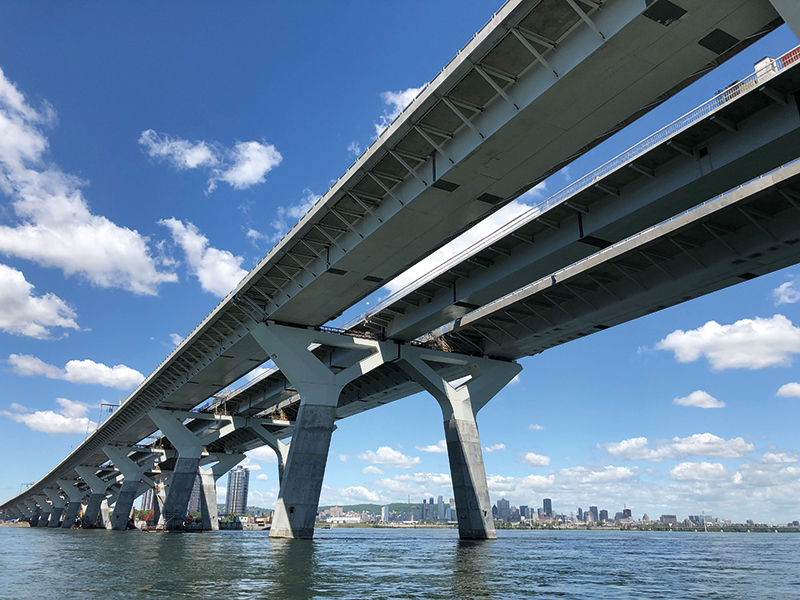By Barbara Capes and Paul Hughes
The last few years have seen a spike in costs for construction projects. Although much of this cost increase has been outside of contracting parties’ control, there are contractual items that can be improved to help significantly reduce overall project costs. The first being a more effective approach to handling disputes. Proactive planning for project disputes would promote best-for-project focus while limiting distractions and reducing the impact on schedules and budgets. An improved dispute process would also result in reduced contingencies and reduced administration costs for all.
Rising Costs
Since the start of the pandemic, we have seen cost spikes for certain materials and in-demand skills. Rising costs are eating away at the budgets for infrastructure projects that have been promised across the country. Each percentage point increase in project cost increases the risk of delays or even cancellation.
Currently, the spectre of disputes, and how they are handled on public sector projects, resonates through all levels of the project pyramid, and has amplified project costs as each part of the supply chain builds in a buffer to protect themselves from unexpected cost increases. Contractors at all levels recognize disputes are costly in terms of time, money, and expertise. Disputes are often protracted, requiring hefty legal fees, and as a direct result, drain resources by diverting the attention of subject-matter experts away from the project itself. Sometimes disputes are not resolved until the end of the project, which chokes cash flow and puts companies at risk of bankruptcy or other financial challenges. Lengthy disputes can also poison relationships, creating more project issues due to the subsequent erosion of trust.
Construction of infrastructure projects is not a simple task. Designs and investigatory work may have only been advanced to a certain point when bids are submitted. Bid submissions are therefore a challenging art form, balancing the best possible price against a variety of tangible and intangible factors including contract risk allocation and previous experience with the client. Claims are an industry accepted practice to address unforeseen conditions and/or changes in the scope of a project that cannot be resolved otherwise through dialogue at the project level. They are a natural part of standard contract delivery models as no sensible contractor takes all the risk when bidding and no sensible client seeks to pass on all risk due to affordability. Where there is a difference of opinion, those claims are escalated to dispute processes.
Developments in dispute resolution processes
Dispute resolution processes (DRPs) are designed as a roadmap for escalating claims when the parties cannot reach a resolution at various predetermined stages. Contrary to their intended purpose, DRPs have become a way to drag out claims to the detriment of all involved, and to the projects themselves. This approach is achieved in various ways including, but not limited to designing DRPs to cater to the most complex disputes; lengthy claim review periods that stagnate negotiations; and/or endless cycles of follow up questions without off-ramps to escalate to the next stage of the process.
Many DRPs are founded on the false economy that the process is fiscally responsible to taxpayers and stakeholders by denying additional project costs regardless of the merits of the claim. Unfortunately, this position comes at the expense of the well-established time, money and expertise costs resulting from protracted project disputes. Contracts are also being crafted to limit eligible claims rather than encouraging both parties to prioritize the successful delivery of the project. This approach has resulted in increased contingencies, higher bid submissions and in some cases, a failure to attract eligible contractors with the necessary expertise.
A way forward
Moving away from the status quo requires a focus on improvement underpinned by principles that consider all parties involved, not just the protection of one side over another. The Royal Institution of Chartered Surveyors has recommended some core principles that every DRP should be measured against:
Simplicity A clear process, mapped out transparently, in a deliberate sequence, with a proportionate number of steps, and reasonable information requirements to resolve disputes.
Fairness and impartiality The process must be seen to be fair to both parties and ensure judgement is impartial based on the facts presented. The escalation of disputes to the next stage must be available to both parties, with neither party able to block progress unilaterally.
Cost-effectiveness The process should be proportional and/or customizable to the size of claim to avoid unnecessary expense by either party.
Timeliness Emphasis should be on resolving issues quickly and enabling both parties to focus on project delivery. Fixed time limits for each stage ensure issues do not drag on for both parties. Compensation should be transferred automatically once a dispute has been settled to avoid cash flow impacts.
Expert-facilitated Both parties must feel confident that jointly chosen independent experts have the required technical knowledge, and problem-solving skills, to determine the root causes of disputes and work with both parties to find proportionate resolutions.
If a DRP does not meet each of these criteria, it is effectively unfit for purpose, and leads to greater time, money, and expertise costs that negatively impact projects and project participants.
A process that is underpinned by the principles above will ensure both parties act in good faith during project delivery. Above all else, these principles will contribute to a more focused work environment that encourages collaboration, which is critical for successful project delivery.
Based on our research through the Future of Infrastructure Group, we have also seen there is an opportunity to take a more proactive approach by introducing a Conflict Avoidance Process. This involves leveraging a roster of approved experts in an inquisitorial role who help coach both parties through project issues. This has been successfully rolled out among major clients in the U.K., delivering huge cost savings, slashing the number of disputes that result in litigation or arbitration, and has even been adopted as standard practice by the U.K. Government.
An opportunity for change
In Canada, we are fortunate that there is a broad acceptance of the merits of infrastructure investment. As the number of projects grows and projects become more complex, it is vital that we spend time improving how we deliver projects. The amount of time spent dealing with disputes is hindering the industry’s ability to deliver projects on time and on budget and driving up project costs overall. According to research from HKA, disputes added around 22 per cent to project costs and nine-and-a-half months to project timelines in Canada as of 2022.
Developing fair and effective dispute resolution processes is possibly the biggest step we could take in controlling cost escalation for public sector projects, and a confluence of events has presented an opportunity to transform the project delivery environment in Canada. New construction legislation in Ontario and Alberta includes adjudication processes, must be incorporated into existing DRPs, and other provinces are soon to follow. The public sector can either seize the opportunity to deliberately reconsider and revise DRPs for the benefit of all projects and those delivering them or compound the ineffectiveness of current DRPs by simply tacking on additional DRP steps.
 Barbara Capes is assistant general counsel with Kiewit.
Barbara Capes is assistant general counsel with Kiewit.
 Paul Hughes is senior director, Cost Consulting and Project Management, with Altus Group.
Paul Hughes is senior director, Cost Consulting and Project Management, with Altus Group.
POTENTIAL CLAIMS CAUSATION
The September/October issue of ReNew Canada will feature an article from consultancy firm HKA on their latest CRUX Insight Report, which analyzes dispute causation data to provide insight into the causes of claims and disputes on major capital and infrastructure projects.
The CRUX Insight Report, introduced in 2018, is based on first-hand information and data from industry-leading consultants working on thousands of projects. Findings are compiled into an annual report identifying and evaluating trends and patterns underpinning potential claims causation factors to proactively address and mitigate them before they escalate into disputes. The information gathered can be distilled down to a variety of categories, including but not limited to breakdowns by market sector (buildings, public infrastructure, power, utilities, etc.), province or state, cost claimed, and extension of time claimed. Assessing and re-assessing a wide-ranging data collection from these angles enables the development of shareable one-of-a-kind perspectives and insights.
CRUX delivers comprehensive information available on several major market sectors in North America. The latest data set includes 90 projects in Canada with an average CAPEX value of $899,020,302 and 394 projects in the United States with an average CAPEX value of $569,172,813. A broad comparison of this data reveals that across both countries, there are several common top causes of claims and/or disputes, including change in scope; incorrect, incomplete, or late design information; workmanship deficiencies; unforeseen physical conditions; and contract management and/or administration failure. However, the analysis also highlights pertinent differences. In the United States, subcontractor/supplier management, operational performance, and installation failures feature among the more frequent factors of a claim or dispute. At the same time, the Canadian data shows that site access and workforce restrictions, bias and cooperation challenges, and personality/cultural differences were more significant. These geographic breakdowns of CRUX data allow HKA to establish common themes across regions and pinpoint issues and complications specific to particular countries.
The most recent report highlights unique issues in the Canadian and U.S. markets, demonstrating how the most dominant causes of claims and disputes are intertwined. In a future article, we will provide more nuanced insights into the North American data set, focusing on public infrastructure. While public infrastructure projects can address critical social issues, climate change concerns, and increases in urban populations, they are often also high-stakes and high-cost projects that combine the risks of significant funds with demanding technical requirements and public scrutiny. These projects also face the hurdles of longer timeframes, rising labor and materials costs, and an active political environment, influencing their progress. Skills shortages, legal requirements for public infrastructure projects, regulations pertaining to payment rules, the continuing impacts of COVID-19, and unrealistic schedules and timelines are some of the specific aspects that tend to debilitate projects in the Canadian market. In a fast-track environment demanding the rapid delivery of complex projects, problems will only persist without a significant change in approach.
[This article originally appeared in the July/August 2023 edition of ReNew Canada]
Featured image: Montreal’s Samuel De Champlain Bridge. (Government of Canada)












